I have traveled up to the South Rim of Grand Canyon several times in the past few weeks to get interesting weather and cloud photographs.
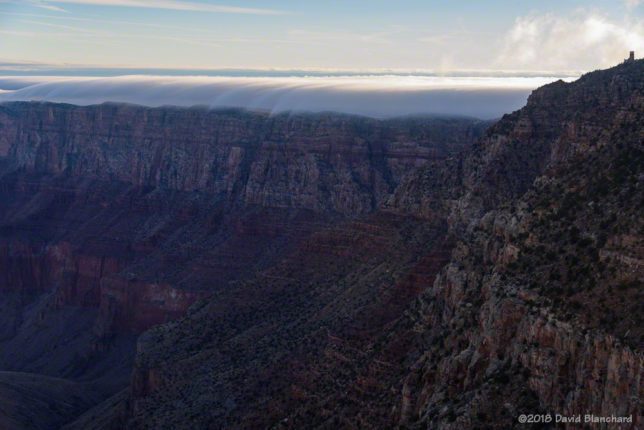
Two weeks ago, we spent two nights at the South Rim waiting for a winter storm to arrive and drop some snow on the higher elevations of the canyon. The storm went too far south and Grand Canyon got nothing but some clouds and a bit of fog. Flagstaff, on the other hand, got about 8″ on snow—which we had to clear from our driveway when we returned.
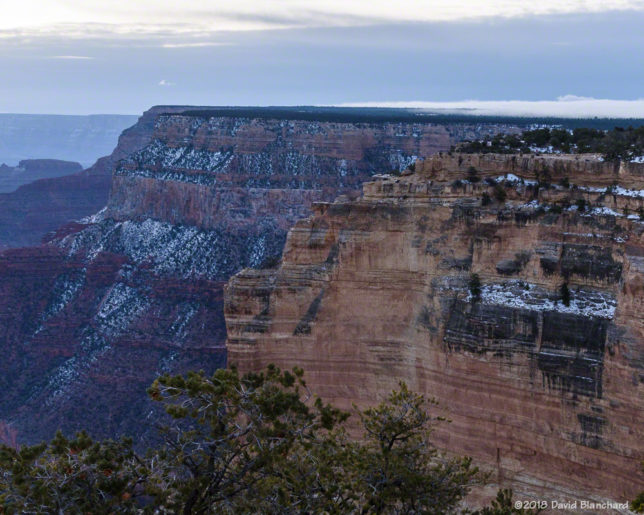
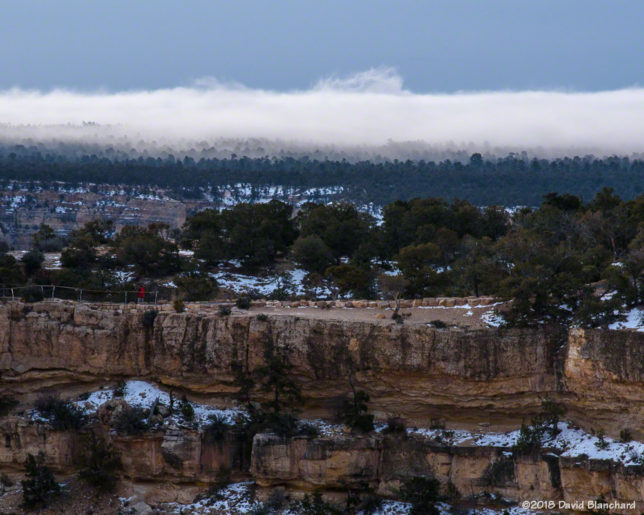
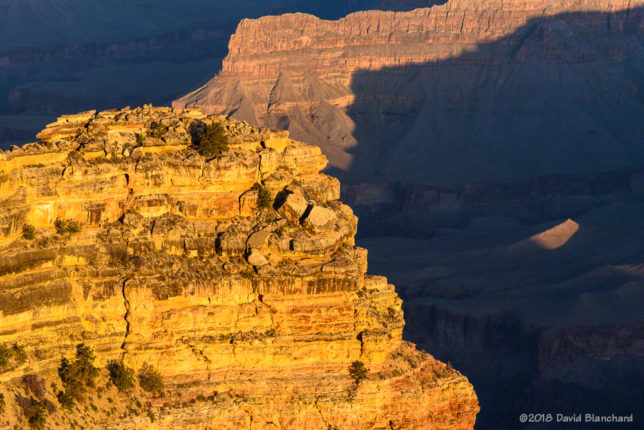
The other goal on that trip was to catch the rising nearly-full moon as it climbed above Cape Royal on the North Rim. That worked out well as the clouds had dissipated by late afternoon. This image was shot as a 12-frame panorama (6 across, 2 rows) resulting in an image of ~200 megapixels. There is a lot of detail in the full-resolution image!

As the sun fell lower in the sky, shadows raced across the canyon bottom while some of the higher towers and buttes remained in the sun—resulting in some interesting lighting and abstract patterns.
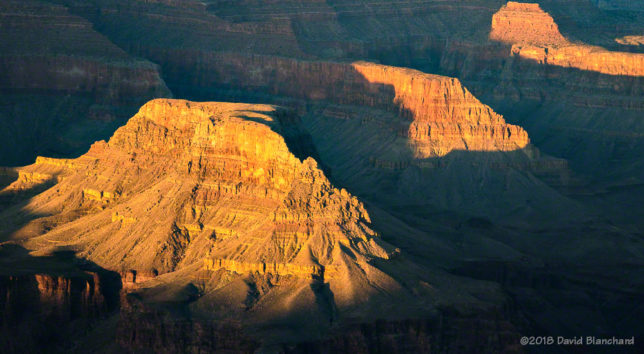
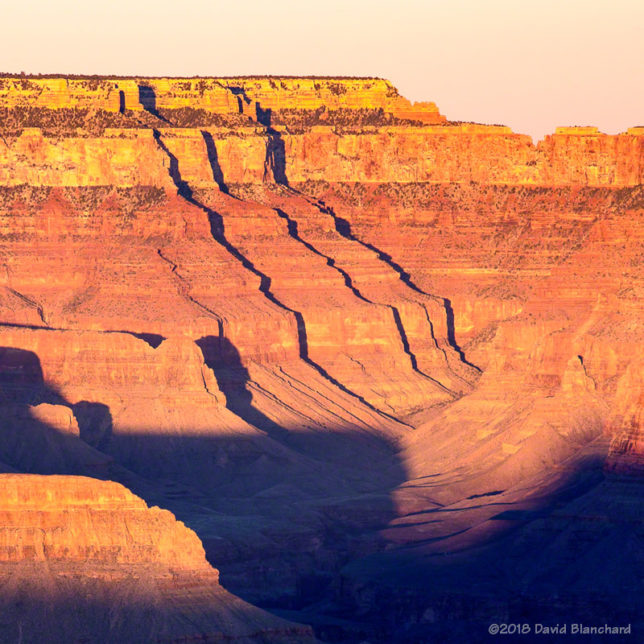
Our final morning had some wave clouds forming downwind of the Kaibab Plateau and being lit by the rising sun.
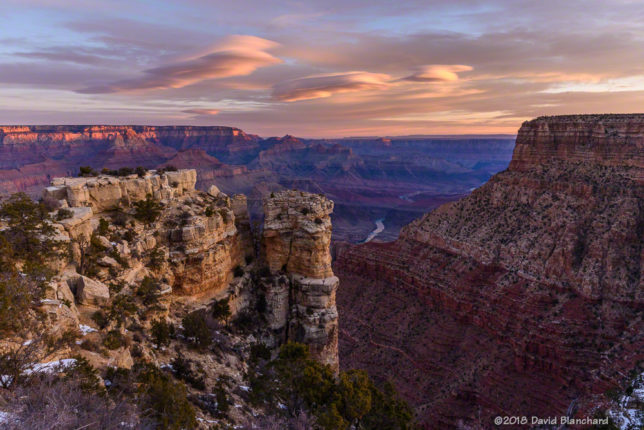
A few days ago we had a widespread rain event—even though rainfall amounts were not particularly large. Most importantly, measurable rain fell in Winslow. This meant that there was a possibility of fog forming in the Little Colorado River (LCR) Valley and drifting into the eastern reaches of Grand Canyon. I arrived at Lipan Point on the South Rim before sunrise and could see some low-lying fog in the LCR well east of the canyon. As the sun rose and the land began to warm, the fog began to lift and move towards the canyon. Eventually, it reached the Palisades north and east of Desert View Overlook. And, then, it began to spill over the sides evaporating only a short distance below the rim.

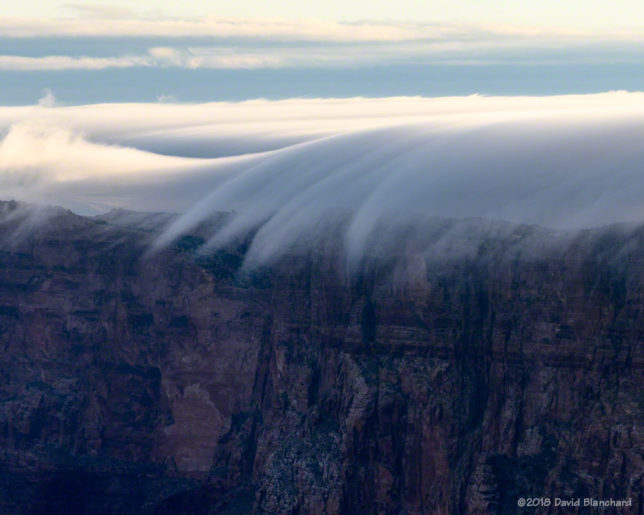
The fog soon swept across Desert View Overlook. I headed over to Desert View to shoot photos of Desert View Watchtower in the fog—but the fog was so thick I had to get very close to even see it.
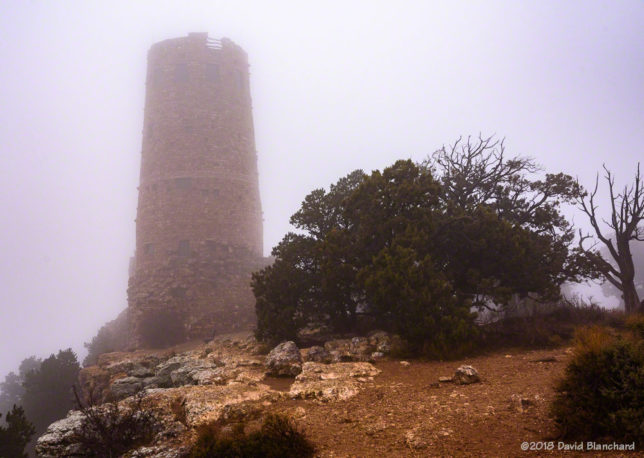
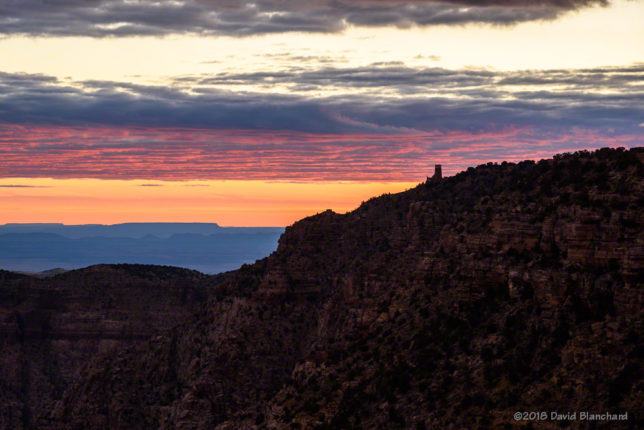
I went back to Grand Canyon again the next morning but there were clouds along with some drizzle and light rain. However, there was a 2–3 minute period in which some clouds had a bit of sunlight color. Yes—that’s a pretty long round-trip drive for 2–3 minutes of good photography. Nobody ever said it was easy…